Chapter 4
Dig a Little Deeper
In This Chapter
• Discover self-assessment
• Learn how to self-assess using tests
• Uncover what self-assessment tests can tell you
• Tests you will take and some to consider
• Find out how you’ll use your results to discover your dream career
Discovering your dream career, the career that will make you happiest, involves more than just figuring out what you want to do. Also important is discovering what you’ll be good at—determining what kind of work will best fit with your values, your temperament, and your interests. To accurately uncover who you are and what you want, self-assessment tests are invaluable.
Don’t worry, these tests aren’t like the ones you took in school. You won’t get a grade, and no matter what, you can’t fail! Best of all, these tests are easy and fun; let me explain.
What Are Self-Assessments?
First, what does self-assessment really mean? If you pick up The Collins English Dictionary, you’ll find self-assessment defined as “an evaluation of one’s own abilities and failings.” But that definition doesn’t really fit self-assessment for our purposes. Instead, let’s give self-assessment the more accurate definition psychologists use: an appraisal of one’s own personal qualities and traits. This type of self-assessment focuses on recognizing your strengths, not your weaknesses. It’s this self-assessment that can help you best uncover your dream career.
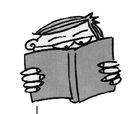
Career Lingo
Self-assessments are appraisals of your own personal qualities and traits that help you identify your strengths.
How Self-Assessments Help
Self-assessments can provide you with all kinds of information about your hidden talents, personality characteristics, and interests. I would be willing to bet you’ll learn at least one thing about yourself that you didn’t know. Truth be told, you’ll probably learn dozens of things from taking the self-assessments in this book.
But don’t misunderstand, these assessments (or any assessment for that matter) will not lay out quick and easy answers about what you should or shouldn’t do with your life. However, by taking the information you’ll learn about yourself as a whole, and by using the guidance you’ll get in this book, you can more quickly and easily discover the path to your dream career.
The key thing to remember: Don’t put all of your eggs in one basket. This translates to: don’t rely solely on one self-assessment test. That’s why this book is filled with information and direction to numerous self-assessments and exercises, so you’ll get as complete a picture as possible of who you are. Then you can determine what area of work will bring you the most overall satisfaction.
The following sections will highlight and provide an overview of the assessment tests contained in this book. They will also give you references to online assessments and books.
Dreams Assessments
Dreams are sources of information. In this book, we want to tap into the dreams you had when you were young, the dreams that are hanging around still. These dreams can be keys to unlocking elements of what you want in your perfect career. Along with checking out your dreams, we also want to take a look at the different aspects of your life and see how satisfied you are right now.
Looking at how satisfied you are currently with the amount of money you make, the work you do, family and friendships, health and fitness, body/mind/spirit, work and living environments, and fun and recreation, is going to give us even more clues to what you may want instead! This is the next step in moving our dreams foreword in time, so we will ask you to create a vision statement for five years down the road. In summary, we take your dreams (past and future), compare them with your current state, and you are able to see the gap or distance between your ideal state and your present reality. This is called a GAP Analysis:
Future State
GAP
Present Reality
GAP
Present Reality
Here are some assessments for uncovering your dreams and looking at your life satisfactions:
• Early Career Dreams Assessment—Chapter 5 contains three exercises that capture your favorite things to do, your early dreams, and dreams that are still with you today;
• The Wheel of Life Assessment—In Chapter 5, you will also find this assessment on your level of current satisfaction with the following: money, career/work, family and friends, health and fitness, spirit/mind/emotions, significant other, environments, fun and recreation;
• Five Years From Now Exercise—This is a visioning exercise to help you think about where you want to be five years from now. This vision can be a motivator and guide for you in your career exploration process.
Values Assessments
Values are attitudes and beliefs you hold dear and will act upon—what’s most important to you in life. Despite what many people believe, it is possible to find a career that aligns work with your values. When you can do this, your work is much more rewarding because it fulfills your personal needs as well as your financial needs. You feel satisfied through and through.
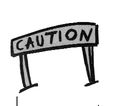
Stop-Look-Listen
Remember how much you railed at your parents’ values—well now you get to decide what’s really important to you. Take the time to decide for yourself!
The interesting thing about values, however, is that the values you have when you are 25 might not be the same values you have when you’re 35, 40, or even 50. This is just one of the reasons people grow disillusioned with their chosen careers and they start searching for a different line of work. Examining your values is something you should do regularly each year to see what’s changed and how you can adapt your work and lifestyle to match what’s important to you. The assessments in this book can help you do this.
Here are some values assessments you can check out:
• Values Sort Assessment. Helps you to identify and prioritize values that are currently important to you in your life. You can take this assessment in Chapter 6.
• Super’s Work Values Inventory. Identifies the work characteristics that are important to you in selecting an occupation. Can be found at www.Kuder.com for cost of $11.00, which also includes two other assessments. Super’s Work Values is a part of the whole Kuder Career Planning System. It is one of the three assessments within the system, Kuder Career Search (interest), Kuder Skills Assessment, and Super’s.
• Work Preference Inventory. Helps you understand your work style based on your values. Free at www.CareerPerfect.com.
Temperament and Personality Assessments
An important part of self-assessment is pinpointing characteristics of your personality. Your personality is more than just how you define yourself. It’s the sum total of all of your qualities and traits. It’s a complex pattern that includes emotional characteristics, mental traits, and behaviors that make you uniquely you.
Some of your most important characteristics, the ones that can help direct you to your dream career, may not be the ones of which you’re aware. In fact, the human personality is so complex, hundreds of years of research have been devoted to understanding the way a person thinks, feels, and relates to others. Self-assessment testing can help you uncover your hidden behaviors and who you really are.
Here are some examples of personality assessments: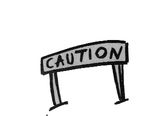
• The Shorter Personality Sorter™. Based on David Keirsey’s work in the areas of temperament and personality. There are four distinct temperaments, each of which has a predisposition to particular attitudes or behaviors. Our temperaments influence our values; communication style; interests; self-image; and how we approach our past, present, and future. This assessment, found in Chapter 7, identifies l6 personality types that are based on our temperament as well as our character.
The last page of this book contains a discount coupon code to take the “Bundle—the Kiersey Temperament Sorter and the Campbell Interest and Skill Survey.” Go to www.KeirseyCampbell.com and follow the instructions for inputting your code to receive your discount. David Keirsey’s latest book is Please Understand Me II: Temperament, Character, Intelligence (Prometheus Nemesis Book Co. Inc., 1998).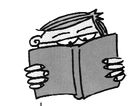

Career Lingo
Temperament is your disposition. It represents tendencies you were born with to have certain attitudes and to behave in certain ways. It is known as the core or driving force of your personality.
• The Myers Briggs Type Indicator (MBTI). Identifies l6 personality types based on different ways you take in information and how you make decisions based on this information. In order to take the MBTI, you must work with someone who is certified to administer this test (career counselor, human resource staff, guidance counselor). For more help with referral sources for test administrators, visit www.cpp.com.
• The Enneagram Type Indicator. Looks at nine basic personality types to help you recognize and understand an overall pattern in your behavior. The Enneagram can help to orient you to your higher spiritual and psychological qualities that each type has in abundance. The Enneagram Type Indicator Sampler can be found at www.enneagraminstitute.com.

Stop-Look-Listen
Watch how much stock you put in the results of any test. Check it out with your friends and family—is this really what I’m like? Do you see me behaving in these ways?
Motivation Assessments
Do you know what motivates you? What makes you start your day with enthusiasm? Some motivations are based on needs that might change over time such as money, relationships, being recognized and respected, contributing to society, or spirituality. Other motivations may run deep, such as what we really value in our careers.
• The Four Boxes of Life Assessment. Makes you think about and prioritize what you want from four basic areas of motivation: security, relationships, recognition, and contribution. You will find this assessment in Chapter 8.
• Career Anchors, Discovering Your Real Values (Pfeiffer, 1985). Edgar Schein’s book contains a self-assessment and gives terrific examples of career motivators, for example:
1. Being seen as an expert
2. Wanting to lead and manage others
3. Working independently
4. Having ongoing security
5. Being an entrepreneur
6. Giving service
7. Experiencing challenges
8. Enjoying a specific lifestyle
Interest Inventories
Your interests are another part of self-assessment that people often forget about. For decades, people chose careers without regard to their interests and hobbies. And because of that, many professionals never experienced sincere job satisfaction.
Yes, work is work. But you can also get paid for doing something you love. This area of self-assessment will help you determine what you really enjoy doing. What your favorite hobbies are or could be. It might come as a surprise to you to know that many leisure activities can be converted into profitable careers.
• Orientation Scales Assessment. This was developed using David Campbell’s theoretical model of seven specific orientations that match our interests to occupations. Chapter 9 will start you on your journey to identifying interests that you have in each of the seven interest orientations. Later, in Chapter 16 you will match your interests to actual jobs. The Campbell Interest and Skills Survey (CISS) is available at a discount if you use the bundle coupon on the last page of this book. To use the discount coupon go to www.KeirseyCampbell.com. Otherwise, you can take the CISS at www.AdvisorTeam.com for $17.95.
• Strong Interest Inventory. Matches your interests to occupations where people have similar interests. It must be administered by a certified person. Look to your guidance counselor, human resources department, career counselor, or check out www.cpp.com for a referral.
• The Career Key. Matches your interests, needs, values, abilities, and skills to occupations. You can find this assessment at www.CareerKey.com, and it costs around $4.95.
• Talent Identification. In Chapter 8, which focuses on your many different types of skills, we ask you to pick out those skills that you have always had, use regularly, feel very comfortable using, and essentially are your talents.
Skill Assessments
Self-assessments can also accurately gauge your skills. These skills include what you’ve learned from past work and life experiences. These skill sets are often placed in three categories:
• Transferable or functional skills: These are skills that can be transferred from one job to another, for example, typing or knowledge of computer software.
• Self-management or adaptive skills: These are behavioral skills that you have learned from your work and life experiences. For example, maybe you excel under pressure or you’re a good communicator.
• Technical or work content skills: These are the skills you have learned from specific training, for example, a degree in teaching or in accounting.
Some examples of skills assessment tests include the following:
• Skills Inventory Assessment. This is a self-assessment to identify skills you have, skills you want, or skills you never want to use in the areas of working with data, things, and people. You will also identify your transferable skills based on this assessment. These assessments can be found in Chapter 10.
• Self-Management Grid. This is an assessment to help you identify your self-management skills (also in Chapter 10).
• Skills Profiler. This tool has you list your skills, identify occupations that require your skills, and look at the gaps in your skills and/or education for each occupation. It is highly recommended that you check this out at www.CareerOneStop.com.
• SkillScan. This assessment takes you through a process of identifying your transferable skills, your knowledge-based skills, and your personal traits and attitudes. The cost is $14.95, and it takes approximately one hour to complete. It can be found at www.skillscan.com.
Lifestyle Assessments
Getting a clear picture of your preferred lifestyle includes understanding how much money you want to make along with the type of balance you want to maintain between career and home life. How do you see yourself spending time after work or on weekends? What’s important to you in your life—relationships, leisure time, and fun, community involvement? This area of assessment is critical in directing your career choice. It takes into consideration all the other important aspects of your life.
Do we stay the same throughout our lives—absolutely not. For example, in your 30s, your career may take up more of your focus and time, but in your 60s and 70s you may want to have more leisure time and involvement in the community. It’s important to check in with yourself periodically to see whether your lifestyle preferences have changed and what implications that has on your career path.
• Lifestyle Preference Assessment. Helps you to determine which lifestyle aspects are most important to you right now and how this might influence your career choices. You will take this self-assessment in Chapter 11.
Ideal Work Environment Assessments
What kind of work environment do you like? For example, do you like to work alone? Do you like to work with other people? Do you hate the idea of being confined to an office? How you’ll answer questions like these will help you uncover your preferred work environment and help you determine in which career areas you’ll be most comfortable and happiest. It also helps you to narrow down your search of organizations that fit your criteria for a good place to work.
• The Ideal Work Environment Assessment. Focuses on three work environment components: location, work environment, and work style. This assessment helps you to narrow down those work environment areas that are most important to you. We will cover this assessment in Chapter 14.
• Preferred Work Style Inventory. This describes the way you learn and operate in new work situations. Neil Yeager is the author of this inventory. You can order this inventory from Charter Oak Consulting Group, Inc. Go to their website at www.COCG.com to contact them about purchasing inventories.
How to Use Self-Assessments
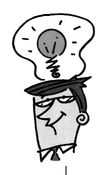
Insider Tips
When taking self-assessment tests, you should respond with your first instinct. Don’t agonize over questions. When you do, you just allow your preconceived beliefs about who you are and what you want to shape your answer, which might not necessarily be the true you.
All of the assessments included in this book have been designed specifically to be clear and easy to use. Each of the tests is unique and is structured differently. For some, you’ll answer two dozen questions; in others you’ll pick and choose interests and skills with which you identify. And still in others, you’ll take a survey asking your preferences for people, things, job, and lifestyle content. No test has more than 100 questions. And no test should take you longer than 30 minutes to complete. Where applicable, you will be instructed to include your test results in the Career Profile Map in Appendix A. This will allow you to keep all your results together for your reference and reflection.
With the varied range of assessments, you will have a clear profile of who you are and what a good career/job match is for you. We will also give you many other resources online that are available for free and for purchase.
Most important, when you start taking the self-assessment tests in this book, and the ones you’ll be directed to online, it’s important to keep all of your results in perspective. For example:
• Never depend on self-assessments to determine what you want to do with your life. Self-assessments are helpful in making you think about who you are, what’s important to you, and what might be some possibilities to research further.
• Always step back and think about the results of each assessment. There may be new information for you to consider. Or, the information might not match who you know yourself to be. So, make up your own mind about the value of each assessment to you.
• One of the reasons we give you so-o-o many assessments is because we want you to look for consistent themes in your results. We want you to be able to look at yourself from a number of angles and to really check what your preferences and passions are for the work you want to do. Your assessment results can be influenced by many things that can cover up your true self, for example:
I’m having a bad day—don’t like anything;
Other people tell me that I’m good at using a particular skill, so I might not pay attention to skills I really want to use;
My current job pulls on me using particular skills and approaches to my work, and this can cover up the styles and skills I prefer to use.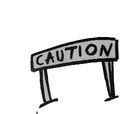

Stop-Look-Listen
Don’t rely on a single test for direction. It’s important that you take all the tests included in this book to obtain the clearest view of who you are.
• Assessments help you to look at yourself from different angles. Take advantage of this. Keep track of what you are finding out by recording your results in your Career Profile Map in Appendix A. It won’t be a new you, but it might be a more informed you.
• Don’t throw out the baby with the bath water. Take the gems—the good information—and let them help you to guide your thinking about your career and lifestyle choices.
We’ve tried to make it easy for you to get the right perspective on your self-assessment test results and to make taking a “misstep” like misinterpreting your results next to impossible.
We’ve organized the second half of this book into sections to help you specifically understand and put to use the culmination of your test results. You’ll learn how to take your assessment profiles and match them to different career areas, how to narrow those areas down into job preferences, and how to discover what you need to know about each one. The result is that you can make an informed decision and choose a career path that is most right for you!
Your Career Profile Map
Each time you take an assessment, you will be asked to write your results in your Career Profile Map located in Appendix A. This is your own personal career map to guide your decisions about jobs, occupations, and careers that match up with what you really want. It also helps to keep all these assessment results straight!
Coach Wisdom
Don’t be overwhelmed by the information in this chapter! Take three deep breaths. You will take these assessments one at a time. You can take a break between chapters and reflect. In the end, you will have a picture of who you are. Then, you will be ready to match your authentic self to the right career areas.
The Least You Need to Know
• Self-assessments can help you to discover more about your values, your interests, your personality, your skills, your preferred lifestyle, your motivations, and the kind of work environment you want to be in.
• Self-assessments cannot teach you all you need to know about yourself, but they can give you a good start in reflecting on who you are and what is most important to you in your life.
• Keep track of your results on all your assessment tests in your Career Profile Map in Appendix A. This will be your guide to selecting a career that matches your personal requirements.
..................Content has been hidden....................
You can't read the all page of ebook, please click here login for view all page.
